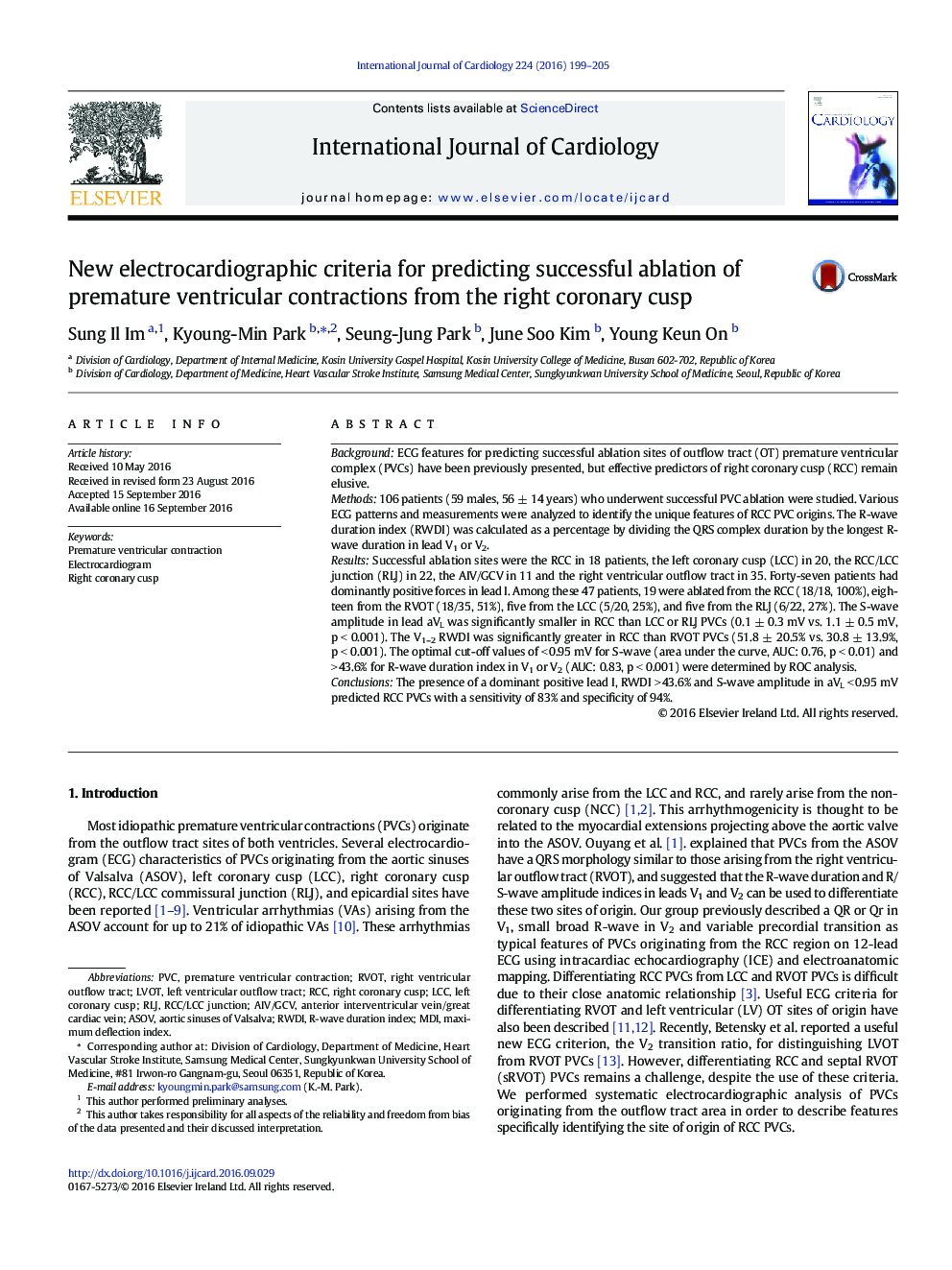| کد مقاله | کد نشریه | سال انتشار | مقاله انگلیسی | نسخه تمام متن |
|---|---|---|---|---|
| 5962383 | 1576124 | 2016 | 7 صفحه PDF | دانلود رایگان |
BackgroundECG features for predicting successful ablation sites of outflow tract (OT) premature ventricular complex (PVCs) have been previously presented, but effective predictors of right coronary cusp (RCC) remain elusive.Methods106 patients (59 males, 56 ± 14 years) who underwent successful PVC ablation were studied. Various ECG patterns and measurements were analyzed to identify the unique features of RCC PVC origins. The R-wave duration index (RWDI) was calculated as a percentage by dividing the QRS complex duration by the longest R-wave duration in lead V1 or V2.ResultsSuccessful ablation sites were the RCC in 18 patients, the left coronary cusp (LCC) in 20, the RCC/LCC junction (RLJ) in 22, the AIV/GCV in 11 and the right ventricular outflow tract in 35. Forty-seven patients had dominantly positive forces in lead I. Among these 47 patients, 19 were ablated from the RCC (18/18, 100%), eighteen from the RVOT (18/35, 51%), five from the LCC (5/20, 25%), and five from the RLJ (6/22, 27%). The S-wave amplitude in lead aVL was significantly smaller in RCC than LCC or RLJ PVCs (0.1 ± 0.3 mV vs. 1.1 ± 0.5 mV, p < 0.001). The V1-2 RWDI was significantly greater in RCC than RVOT PVCs (51.8 ± 20.5% vs. 30.8 ± 13.9%, p < 0.001). The optimal cut-off values of < 0.95 mV for S-wave (area under the curve, AUC: 0.76, p < 0.01) and > 43.6% for R-wave duration index in V1 or V2 (AUC: 0.83, p < 0.001) were determined by ROC analysis.ConclusionsThe presence of a dominant positive lead I, RWDI > 43.6% and S-wave amplitude in aVL < 0.95 mV predicted RCC PVCs with a sensitivity of 83% and specificity of 94%.
Journal: International Journal of Cardiology - Volume 224, 1 December 2016, Pages 199-205
